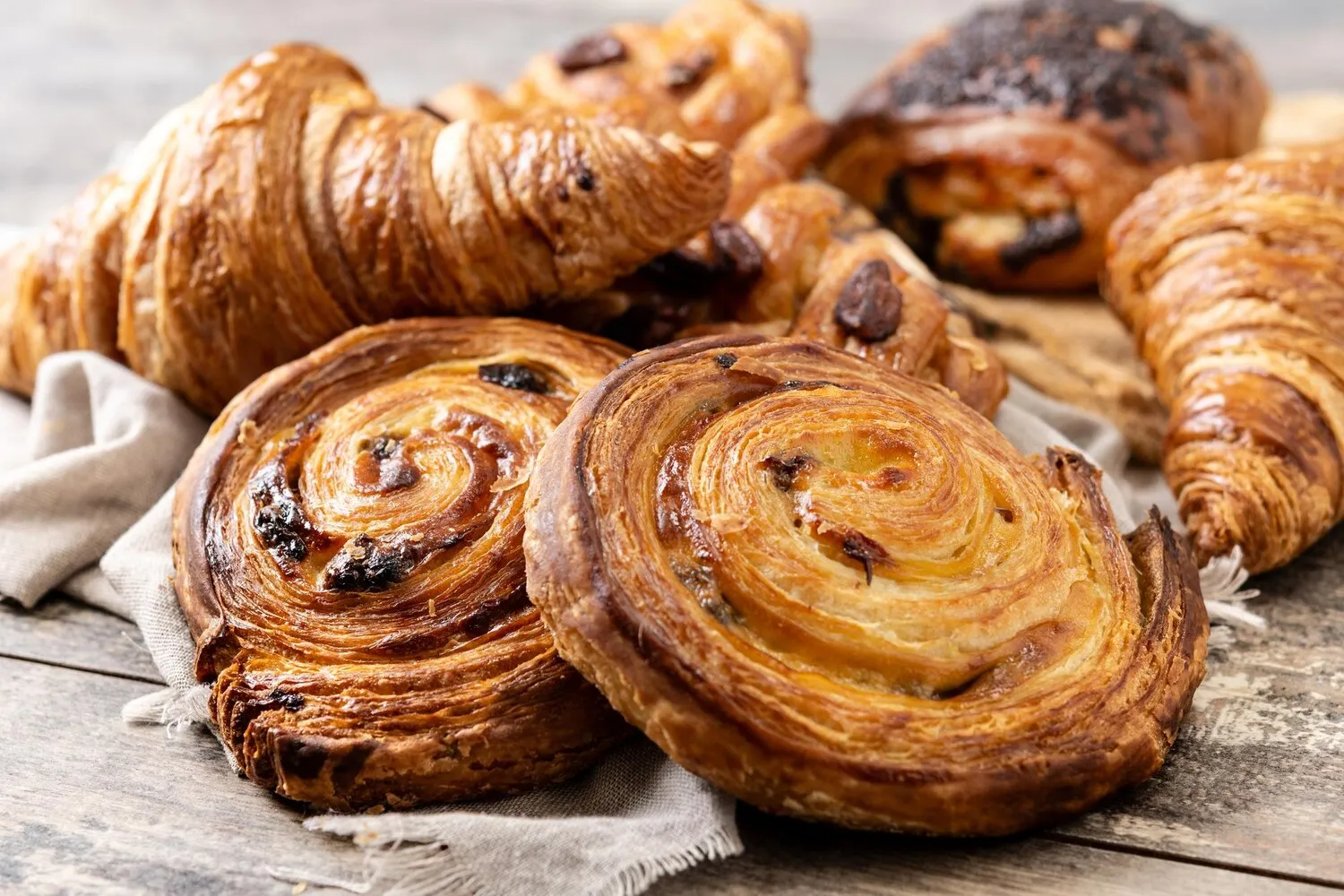
Pastries
Pastries are likely offered, consistent with standard cafe offerings.
Nutrition Facts
* The % Daily Value (DV) tells you how much a nutrient in a serving of food contributes to a daily diet. 2,000 calories a day is used for general nutrition advice.
Noë Cafe
The history of viennoiseries, including croissants and pain au chocolat, is deeply intertwined with the history of bread and baking in France and Austria. While often associated with France, the croissant's ancestor is believed to be the Austrian kipferl. The introduction of steam ovens in the 19th century revolutionized baking, enabling the flaky texture characteristic of these pastries.
Viennoiseries are an integral part of French culture, often enjoyed for breakfast or as an afternoon treat. They represent a simple yet luxurious pleasure, ingrained in daily life and social gatherings.
Breakfast Staple
Croissants and pain au chocolat are commonly eaten for breakfast alongside coffee or tea. They are widely available in bakeries (boulangeries) and cafes throughout France.
Social Gatherings
Pastries are frequently served at social events and gatherings, adding a touch of elegance and indulgence to the occasion.
Symbol of French Baking
Viennoiseries are considered an iconic representation of French baking expertise and are appreciated for their craftsmanship and quality ingredients.
Pastries like croissants and pain au chocolat offer a rich and buttery flavor profile, often balanced with sweet notes from chocolate or a simple sugar glaze.
The primary flavor is that of butter, developed through the process of lamination – layering dough with butter and repeatedly folding it to create hundreds of thin layers. This results in a light, airy, and flaky texture with a rich, decadent taste. Croissants showcase the pure butter flavor, while pain au chocolat adds a dimension of dark or milk chocolate, providing a sweet and slightly bitter counterpoint. High-quality ingredients are crucial for optimal flavor.
Butter Temperature
Ensure the butter is cold but pliable enough to be laminated without breaking. This is crucial for creating distinct layers.
Dough Resting
Allow the dough to rest properly between folds. This relaxes the gluten and prevents the dough from becoming too tough.
Baking Temperature
Bake at a high temperature initially to create steam and allow the layers to puff up. Reduce the temperature slightly to ensure even baking throughout.
Proofing
Proper proofing is crucial for a light and airy texture. Over-proofing can lead to a collapse during baking.
Explore additional Cafe dishes and restaurants
Explore CafeDiscover top dining spots and culinary experiences in San Francisco.
Explore San FranciscoLearn more about the food culture, restaurant scene, and culinary heritage of United States.
Explore United States